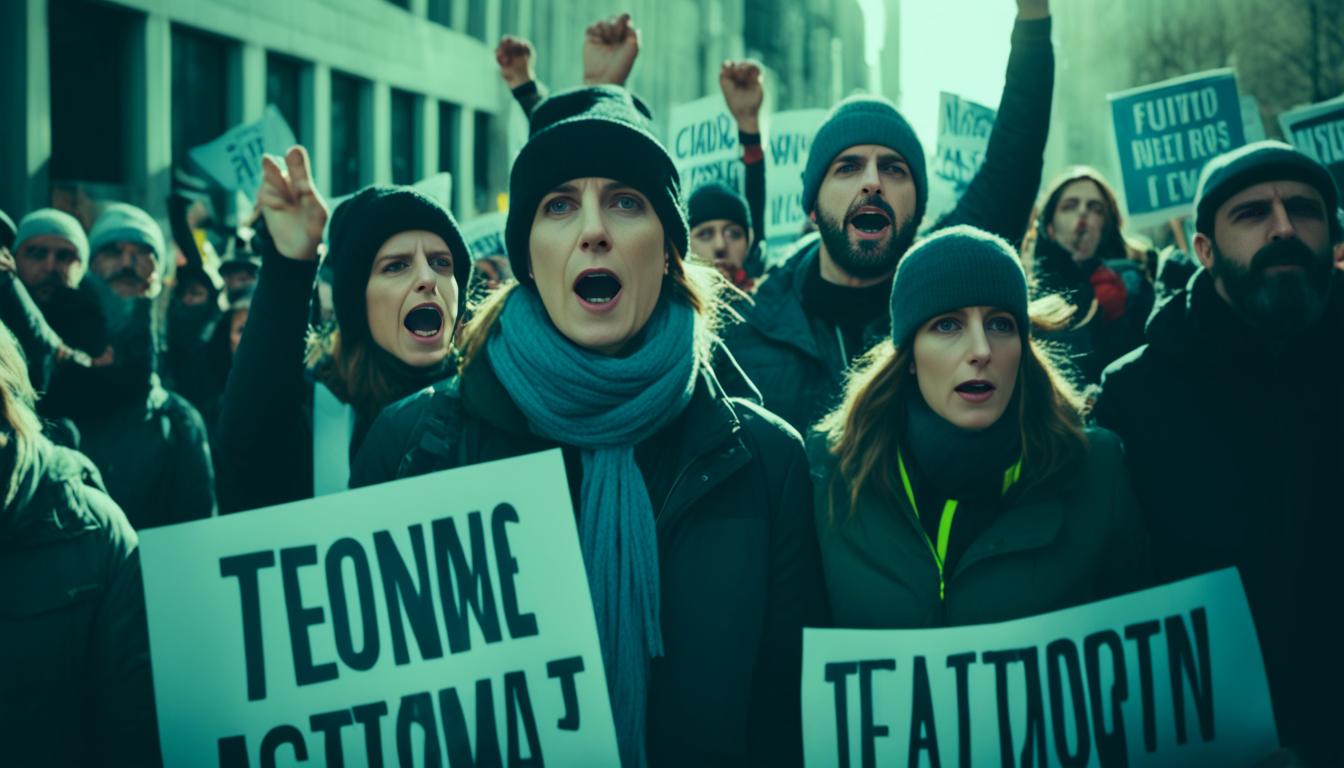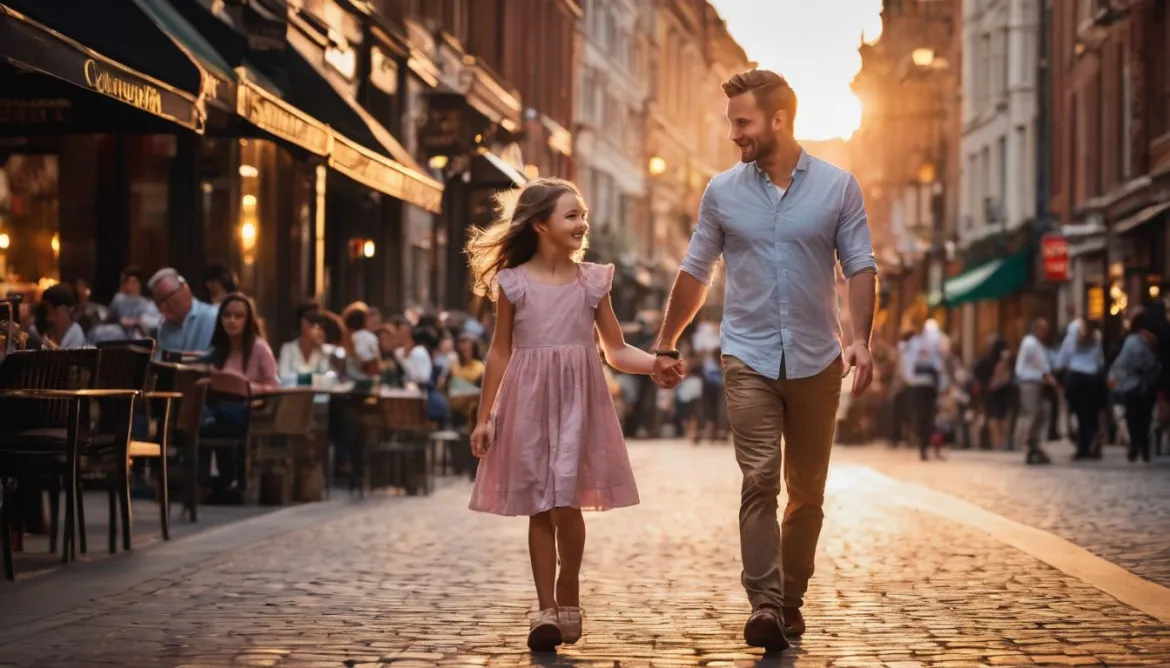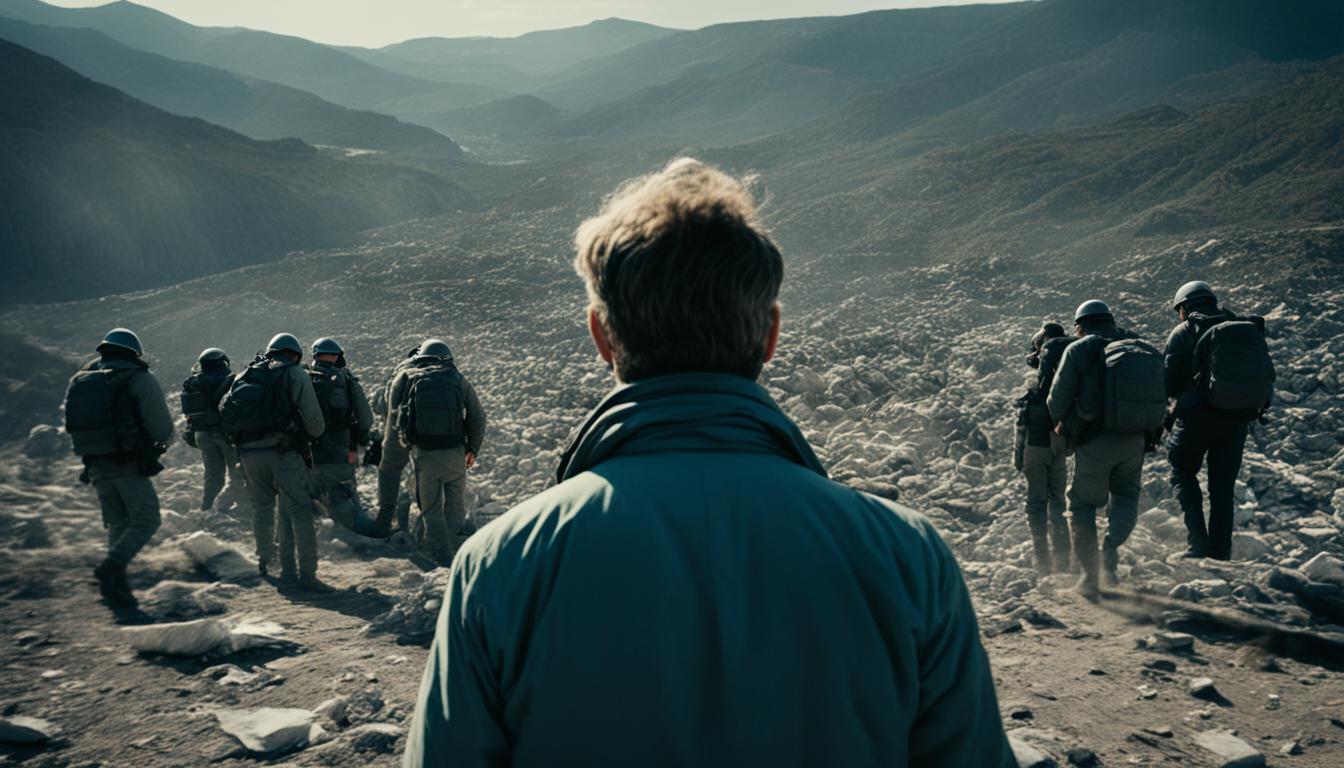Welcome to our article on social documentary photography, where we explore the power of this medium in highlighting social issues. Documentary photography goes beyond capturing beautiful images; it serves as a window into the realities of our society, shedding light on important stories that need to be told. Through the lens of documentary photographers, we can gain a deeper understanding of the triumphs and struggles that shape our world.
Key Takeaways:
- Documentary photography captures real-life events, people, and places, bringing attention to social issues.
- It holds significance in preserving history, conveying authentic emotions, and serving as a tool for social commentary.
- Renowned photographers like Dorothea Lange, Walker Evans, Henri Cartier-Bresson, and Steve McCurry are known for their impactful contributions to this genre.
- Documentary photography has a strong connection to journalism, employing images to tell stories and amplify their reach.
- Subjects covered in social documentary photography include social issues, conflict and war, environmental concerns, and cultural identity.
The Significance of Documentary Photography
Documentary photography holds a unique place in the world of visual storytelling. It goes beyond capturing beautiful images; it captures reality and unveils untold stories. What sets documentary photography apart is its authenticity – the ability to capture genuine moments and emotions.
Through compelling visual narratives, documentary photography tells stories that resonate with viewers and provoke thought. It has the power to stir emotions, spark conversations, and sometimes even drive action. By documenting significant moments in history, it ensures that future generations understand and learn from the past.
Moreover, documentary photography delves into social issues and offers social commentary by giving a voice to marginalized communities and shedding light on injustice. It highlights the realities people face and challenges societal norms. The genre enables us to recognize the importance of addressing these issues and working towards a more inclusive and just society.
“Photography is a way of feeling, of touching, of loving. What you have caught on film is captured forever. It remembers little things, long after you have forgotten everything.” – Aaron Siskind
Documentary photography also serves as a vital tool for the preservation of history. By capturing real-life moments, it creates a visual archive that future generations can reference to better understand their roots. It goes beyond words and serves as a link to the past, allowing us to explore and appreciate our history.
| Authenticity | Storytelling | Preservation of History | Social Commentary |
|---|---|---|---|
| Documentary photography captures genuine moments and emotions, presenting an authentic representation of reality. | Through visual narratives, it tells powerful stories that resonate with viewers, provoking thought and sometimes action. | By documenting significant moments in history, it preserves and shares the collective memory of societies. | It delves into social issues, giving a voice to marginalized communities and shedding light on injustice. |
Documentary photography plays a crucial role in our society, driving conversations, fostering empathy, and inspiring change. It serves as a powerful medium for expressing the diverse experiences and realities of individuals and communities around the world.
Influence on the Art World
Documentary photography has had a profound impact on the art world, blurring the lines between art and reality. Renowned photographers such as Dorothea Lange, Walker Evans, Henri Cartier-Bresson, and Steve McCurry have created iconic images that are celebrated for their artistic and social significance.
Through their photographs, these artists have challenged traditional notions of art by incorporating real-life scenes and experiences. They have shown us that art can be found in the everyday, in the raw and unfiltered moments that make up our world.
Take, for instance, Dorothea Lange’s famous photograph “Migrant Mother” (1936), which captures the struggles of a mother during the Great Depression. The image not only showcases Lange’s technical skill but also conveys the harsh realities faced by many during that time. It has become a symbol of the era’s socioeconomic struggles and continues to resonate with audiences today.
Similarly, Walker Evans documented life during the Great Depression and collaborated with writer James Agee on the book “Let Us Now Praise Famous Men” (1941). Through their work, they shed light on the lives of sharecroppers in the American South, giving a voice to those who often went unheard.
Henri Cartier-Bresson, known as the father of modern photojournalism, captured decisive moments in history with his candid and spontaneous approach. His composition and timing resulted in images that were not only visually captivating but also contained layers of meaning and emotion.
Steve McCurry, on the other hand, has brought attention to human conflict and human rights issues through his powerful portraits. His photograph “Afghan Girl” (1984) has become an iconic image, depicting the plight of Afghan refugees and capturing the resilience and strength of the human spirit.
“Photography is a way of feeling, of touching, of loving. What you have caught on film is captured forever… It remembers little things, long after you have forgotten everything.” – Aaron Siskind
The Impact of their Vision
The work of these photographers has not only shaped the art world but has also influenced other fields such as journalism and activism. Their images have the power to evoke emotions, raise awareness, and ignite conversations about important social issues.
Documentary photography has expanded the possibilities of artistic expression, encouraging us to see the world through a different lens. It has taught us that art can be a force for change, giving voice to the marginalized, shining a light on injustice, and fostering empathy and understanding.
| Photographer | Notable Works |
|---|---|
| Dorothea Lange | “Migrant Mother” (1936) “An American Exodus” (1939) |
| Walker Evans | “Let Us Now Praise Famous Men” (1941) “American Photographs” (1938) |
| Henri Cartier-Bresson | “The Decisive Moment” (1952) “Images à la Sauvette” (1952) |
| Steve McCurry | “Afghan Girl” (1984) “Portraits” (1999) |

These photographers have left an indelible mark on the art world, inspiring future generations of artists and photographers to push boundaries and tell stories that matter. Their work continues to resonate with us, reminding us of the power of images to capture the essence of humanity and spark change.
The Marriage of Photography and Journalism
Documentary photography and journalism have always had a deep and intertwined relationship. These two mediums share a common goal: to tell stories, convey truths, and create a lasting impact on society. By capturing powerful images that speak volumes, photographers like Margaret Bourke-White and Robert Capa have demonstrated the immense power of photojournalism.
Photojournalism, a form of journalism that utilizes photography as a storytelling tool, heavily relies on documentary photography to document and report on real-life events. Through their lens, photojournalists capture the essence of a moment, stripping away any potential biases and delivering an unaltered representation of the truth.
“The picture is not made by the photographer, the picture is more good or less good in function of the relationship that you have with the people you photograph.” – Robert Capa
In a world driven by visuals, these images have the ability to reach a wide audience through newspapers, magazines, and online platforms. The impact of a single photograph can transcend borders, resonate with people from different cultures, and inspire action.
Photojournalists are often at the forefront of major historical events, capturing the emotions, pain, and triumphs that shape our world. Their commitment to truth-telling makes them crucial agents of change, holding those in power accountable and shedding light on social injustices that need to be addressed.
Through their photos, Margaret Bourke-White, Robert Capa, and countless others have brought attention to important issues, sparking conversations, and encouraging empathy. Their work continues to serve as a reminder of the power of visual storytelling and the role it plays in shaping our perception of the world around us.
The marriage of photography and journalism in the form of documentary photography has created a medium that transcends mere visual stimuli; it serves as a catalyst for change, giving a voice to the voiceless and revealing the truth behind the headlines.
Notable Photographers:
- Margaret Bourke-White
- Robert Capa
Renowned Documentary Photographers
Several artists have made significant contributions to the field of documentary photography. Let’s explore the works of some of the most renowned photographers in this genre:
Dorothea Lange: Dorothea Lange’s powerful images captured the suffering and struggles of the American people during the Great Depression. Her iconic photograph “Migrant Mother” has become an enduring symbol of resilience in the face of adversity.
Walker Evans: Walker Evans documented the harsh realities of the Great Depression, creating a visual record of the era. His collaboration with writer James Agee on the book “Let Us Now Praise Famous Men” delves into the lives of sharecroppers in the American South.
Henri Cartier-Bresson: Regarded as the father of modern photojournalism, Henri Cartier-Bresson captured decisive moments with his keen eye and impeccable timing. His candid and spontaneous approach to photography influenced generations of photographers.
Steve McCurry: Steve McCurry’s work often focuses on human conflict and human rights issues. His iconic photograph of “Afghan Girl” has become emblematic of the impact of war on innocent lives and the resilience of the human spirit.
These photographers have left an indelible mark on the world of documentary photography, using their lens to shed light on social issues, capture raw emotions, and tell stories that resonate with audiences worldwide.
A Glimpse into the Works of Renowned Documentary Photographers
| Photographer | Notable Works |
|---|---|
| Dorothea Lange | “Migrant Mother,” “The American Exodus,” “An American Exodus: A Record of Human Erosion” |
| Walker Evans | “Let Us Now Praise Famous Men,” “American Photographs,” “Many Are Called” |
| Henri Cartier-Bresson | “The Decisive Moment,” “Images à la sauvette,” “China” |
| Steve McCurry | “Afghan Girl,” “The Unguarded Moment,” “Monsoon” |
Top Subjects in Documentary Photography
Documentary photography is a versatile medium that allows us to shed light on various social issues, conflicts, environmental concerns, and cultural identities. Through captivating images and powerful narratives, these photographers capture the essence of different subjects, creating awareness and understanding. Let’s explore some of the top subjects that documentary photographers often focus on:
Social Issues
Documentary photographers play a crucial role in bringing attention to social issues that impact our society. They use their lens to document poverty, discrimination, inequality, and human rights violations. By visually capturing the struggles and injustices faced by marginalized communities, these photographers aim to create empathy, inspire change, and raise awareness.
Conflict and War
The impact of conflict and war on human lives is a subject that documentary photographers bravely tackle. Their work takes us to war zones and exposes the harsh realities faced by civilians, soldiers, and refugees. Through their photographs, we witness the devastating consequences of conflict and the resilience of individuals amidst turmoil.
Environmental Concerns
Documentary photographers document the effect of environmental issues such as climate change, deforestation, and pollution on our planet and its inhabitants. They capture striking visuals that showcase the consequences of human actions, highlighting the need for conservation and sustainable practices. These photographs serve as a call to action, urging us to protect our environment for future generations.
Cultural Identity
Photographers dive into the rich tapestry of cultural identities, documenting the traditions, customs, and daily lives of different communities around the world. They celebrate diversity and seek to preserve cultural heritage through their images. By exploring cultural identity, these photographers bridge gaps, foster understanding, and promote appreciation for our global human family.
Documentary photographers are passionate storytellers who use their craft to shine a light on pressing social issues, human experiences, and our connection to the world. Their work serves as a powerful reminder of the importance of visual storytelling and its impact on our collective consciousness.

Through their lens, documentary photographers capture the essence of social issues, conflict and war, environmental concerns, and cultural identity. Their photographs serve as a visual documentation of our world, prompting dialogue, inspiring change, and fostering a deeper understanding of the complexities that shape our society.
Conclusion
Documentary photography is a vital and impactful field that authentically captures the essence of reality and tells powerful stories. Through its visual storytelling, it has the ability to inspire change and foster empathy and understanding. As we witness the world through the lens of documentary photographers, we are confronted with social issues that demand our attention.
By documenting social issues, documentary photography shines a light on injustices and gives a voice to marginalized communities. It challenges societal norms and encourages us to question the status quo, striving for a more compassionate and just world. Through the preservation of history, it ensures that the stories of the past are not forgotten, enabling us to learn from our collective experiences and avoid repeating the mistakes of the past.
Visual storytelling is at the heart of documentary photography. It allows us to connect with the subjects in the photographs, understanding their struggles and triumphs, their joys and sorrows. Through these images, we are transported into different worlds, immersed in the stories they tell. Documentary photography is a powerful medium that transcends language and cultural barriers, compelling us to reflect on our own lives and the societies we live in.
FAQ
What is documentary photography?
Documentary photography is a powerful medium for capturing real-life events, people, and places, shedding light on social issues, and preserving history.
How does documentary photography differ from other forms of photography?
Documentary photography stands out for its authenticity and its ability to tell compelling visual narratives that resonate with viewers.
What is the significance of documentary photography?
Documentary photography plays a crucial role in storytelling, documenting historical moments, uncovering untold stories, and giving a voice to marginalized communities.
How has documentary photography influenced the art world?
Renowned photographers like Dorothea Lange, Walker Evans, Henri Cartier-Bresson, and Steve McCurry have created iconic images that challenge traditional notions of art and expand artistic boundaries.
How is documentary photography related to journalism?
Documentary photography and photojournalism are closely intertwined, as photographers like Margaret Bourke-White and Robert Capa have demonstrated the power of images in conveying the truth of events.
Who are some influential documentary photographers?
Dorothea Lange, Walker Evans, Henri Cartier-Bresson, and Steve McCurry are renowned documentary photographers known for their impactful and socially significant work.
What subjects do documentary photographers typically cover?
Documentary photographers cover a wide range of subjects, including social issues, war and conflict, environmental concerns, and the traditions and lifestyles of different cultures.
How Can Social Documentary Photography also Address Environmental Conservation Issues?
Social documentary photography can serve as a powerful environmental conservation photography lens. By capturing impactful images of environmental degradation and conservation efforts, photographers can raise awareness and inspire action. These images can shed light on urgent environmental issues and spark meaningful conversations about conservation and sustainability.




